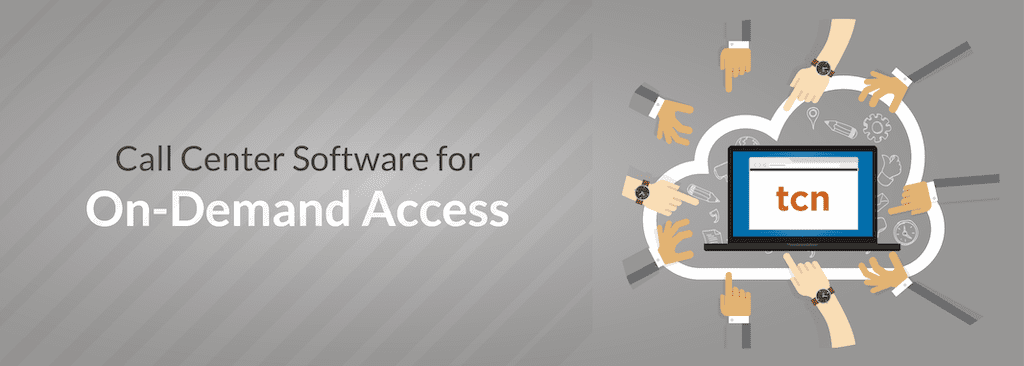Call Center Software For On-Demand Access
Every decade or so, there is a natural shift in technology and computing. It’s at the very foundation of our livelihood, and one could argue that it is just a part of our evolution of society. For example, only ten years ago, Apple gave us the iPad and the iPhone two years before. It seems that with each technical advancement, our inherited desire for instant gratification grows evermore.
In today’s world, consumers are accustomed to speed and instant access — whether that’s watching the latest episode of the Mandalorian on Disney+ or, more importantly, how fast a business can provide a consumer with a customer experience that is fast, seamless, and positive. In today’s world, all three are required to provide instant gratification. Sorry to say it, but on-premise solutions are the primary reason many call centers can’t stay ahead of the natural shift in how consumers interact with businesses.
To accomplish a positive and speedy customer service experience, businesses will need to leverage the latest call center software and on-demand cloud infrastructure.
On-Premise Solutions Are Out
Time to ditch the hardware.
With traditional on-premise solutions services being dated, slow, and cumbersome, they have still become the norm for many businesses nonetheless. Here are a few ways they can weigh down a call center.
- High start-up costs
A legacy system’s upfront costs make it hard to reinvest and evenly distribute operating expenses for a more predictable balance sheet.
- Capacity or line restrictions
Many can relate to a slow computer the older it gets, like the one you have at home. In a similar fashion, on-premise solutions have limitations to their CPU and RAM capacity. Due to these limitations call centers could run into line restrictions that could result in dropped or unanswered calls.
- Fees for upgrades and maintenance
In addition to capacity limitations, costly upgrades and yearly maintenance fees can add up. An annual maintenance contract can end up being up to a quarter of the entire license cost — not to mention that adding another channel is nearly impossible.
4. Limited support and customer service
When a business buys an on-premise solution, they own it and are responsible for maintenance, storage, and the potential downtime that may plague a call center. This equates to more money and IT employees to help keep the systems operational. Some small to midsize organizations do not have this luxury.
On-Demand Call Center Software Is Here to Stay
On the flip side of premise solutions, a cloud call center software like TCN offers more features with no startup costs, unlimited potential and capacity, no maintenance costs, and better customer service.
With recent events, there has been a surge and need for cloud services that are on-demand. It seems this trend is here to stay, and call centers specifically are poised to take advantage of the many benefits a SaaS-based software solution has to offer.
Because of the increased need for speed, on-demand call center software solutions are guaranteed to increase each customer interaction’s quality and cadence. Your customers will thank you for a positive customer experience while agents and managers see an increase in productivity. With on-demand, you can accurately predict monthly costs that scale with your business, up or down.
That is just the beginning. Check out these other benefits.
- Quickly scale up or down
- Multi-tenant and location agnostic
- Reduce infrastructure costs
- No contracts or maintenance and only pay for what you need
- Instant updates to the latest version
- Easy integration points and APIs
- Increased visibility into call center operations
I’d invite anyone on the fence to consider the many benefits of transitioning to cloud-based call center software.
To learn more, download our free eBook: Stone Age to Space Age: Why Call Center Executives are Switching to the Cloud.
